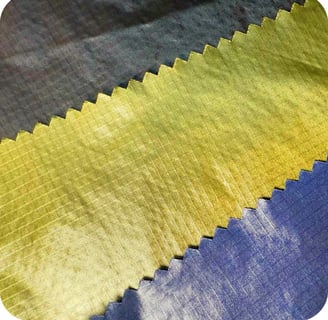The Future of the Textile Industry: Trends and Innovations for 2025
#textile industry has been rapidly evolving, particularly with advancements in #technology, increased awareness of #sustainability, and shifting consumer demands. In 2025, the textile industry will encounter new opportunities and challenges. This article will analyze the latest developments in the textile industry and explore the anticipated popular #fabrics and design elements for 2025.
CC Textile WeChat: CC-Jacquard WhatsApp:+8615306267080
10/5/20242 min read


Introduction to the Evolving Textile Industry
The textile industry has undergone significant transformations in recent years, driven by advancements in technology, a heightened awareness of sustainability, and evolving consumer preferences. As we approach 2025, these trends are expected to shape the market landscape, presenting both new opportunities and challenges for manufacturers, designers, and consumers alike. This article aims to analyze the most recent developments within the textile industry and explore the anticipated popular fabrics and design elements for 2025.
Technological Advancements Influencing Textile Production
Technology has become an integral part of the textile industry, revolutionizing how fabrics are produced and designed. The incorporation of smart textiles, which actively respond to environmental changes, is one of the most notable innovations. Such fabrics utilize embedded sensors to regulate temperature, moisture, and other parameters, leading to enhanced functionality and comfort. Furthermore, automation and artificial intelligence in the manufacturing process enable greater efficiency and precision, reducing waste and costs.
The rise of digital printing technology is another trend impacting the textile sector. This method allows for custom designs and patterns to be printed directly onto fabrics, fostering creativity and reducing lead times. As consumers increasingly demand personalized products, this technology will play a vital role in shaping market offerings in 2025.
Sustainability: A Core Focus for the Future
With growing concerns about the environmental impacts of textile production, sustainability has become a fundamental consideration in the industry. Consumers are now more conscious of their purchasing decisions, often favoring brands that prioritize eco-friendly practices. As a result, companies are increasingly adopting sustainable sourcing methods, utilizing organic and recycled fibers to meet consumer expectations.
In addition, innovative practices such as zero-waste design and circular fashion are gaining traction. These approaches focus on minimizing waste throughout the product lifecycle, from production to disposal. By 2025, it is predicted that more brands will embrace such sustainable practices, aiming to enhance their market position and appeal to environmentally conscious consumers.
Anticipated Trends in Fabrics and Design Elements
Looking ahead, several fabric trends are expected to dominate the textile industry in 2025. Natural and biodegradable materials, including organic cotton, Tencel, and hemp, will likely be at the forefront due to their environmental benefits. Moreover, innovative blends that combine functionality with comfort will gain popularity, attracting consumers seeking both performance and style.
Design elements will also evolve in tandem with consumer demands. Minimalistic aesthetics, bold prints, and flexible designs that accommodate diverse body types are forecasted to gain traction. Additionally, technology-enhanced fabrics will continue to inspire designers, leading to the development of versatile products that merge style with innovation.
In conclusion, the textile industry stands at a pivotal moment as it navigates technological advancements, sustainability, and changing consumer preferences. As we look towards 2025, it is evident that the industry will not only face challenges but also embrace numerous opportunities for growth and innovation. Stakeholders should remain attuned to these trends to harness the potential that this dynamic landscape offers.
Get in touch
Address
Suzhou CC Textile Co.,LTD
4101 West Ring 2nd Road, Shengze Town, Wujiang District, Suzhou, Jiangsu Province, China
ZIP Code:215228
